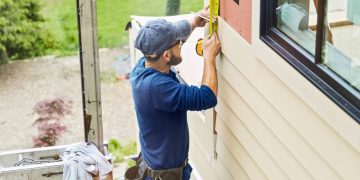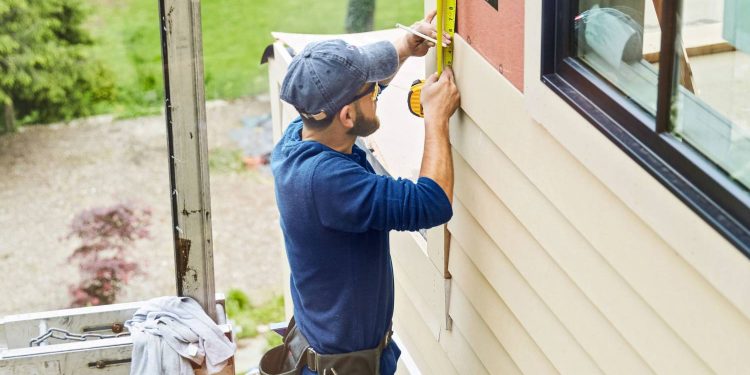When it comes to maintaining the exterior of your home, the siding is not only about aesthetic appeal—it also protects your home from weather elements and helps in insulation. If you’re noticing issues with your siding, it may be time to consider whether you need siding repair or a complete replacement. Here’s what homeowners in Fort Wayne should look out for when evaluating their siding.
1. Visible Damage
Start with a visual inspection of your siding. Look for cracks, holes, or breaks, especially after extreme weather conditions. Small localized damage can often be repaired without the need for a full replacement. However, widespread damage might require a complete overhaul to ensure your home remains protected and energy-efficient.
2. Warped or Rotted Siding
If the siding is warping or if you find soft spots (a sign of rotting), this indicates water infiltration and potential damage to the underlying structure. Use a screwdriver to probe the underlayer at the edges or joints where warping or softness is visible. If the layer underneath has begun to deteriorate, consider replacing your siding to prevent further structural damage.
3. Mold, Mildew, or Fungus Growth
While some amounts of mold or mildew can be cleaned off, their presence, especially if widespread, suggests that water is penetrating your siding and possibly the interior walls. If the problem covers a small area, you might manage it with siding repair. However, extensive fungal growth usually calls for an overall replacement by professional siding contractor to ensure moisture hasn’t compromised the integrity of large sections of your siding.
4. Bubbling or Blistering Paint
Bubbling or blistering paint is often a result of heat or moisture problems. If localized, the siding can be repaired and repainted. However, if you notice these issues are widespread, it’s a sign that moisture has become trapped under the siding, and a replacement might be necessary to address potential structural damage.
5. Increased Heating or Cooling Costs
Unexplained increases in your heating or cooling costs could be due to deteriorating siding allowing air to escape. If other common problems like windows or roofing have been ruled out, it might be time to look at your siding. In such cases, replacing your siding can improve insulation and reduce your energy bills.
6. Fading Color
While fading itself isn’t necessarily a sign of structural failure, it indicates your siding’s age and weather resistance. Siding that has lost its color might also be approaching the end of its life expectancy. Fading combined with other issues such as cracking or softening usually suggests it’s time for replacement.
7. Frequent Need for Paint
If you find yourself needing to repaint your siding more frequently than every 5-6 years, it’s a sign that there’s an underlying problem with the material. Siding that remains in good condition should hold its paint well. Frequent painting can be more costly over time than investing in new siding.
8. Interior Water Damage
Signs of water damage inside your home, such as peeling paint or wallpaper, could indicate that your siding is failing to protect your home from the elements. This is often a clear sign that siding repair might not be sufficient, and replacement could be necessary to prevent further damage.
When considering whether to repair or replace your siding, it’s essential to assess the extent and nature of the damage. For many homeowners in Fort Wayne, a combination of these signs can help decide the appropriate course of action. It’s advisable to consult with a professional siding contractor who can provide a thorough inspection and recommend the best options based on your specific situation. Remember, timely interventions can save you significant money and trouble in the long run.


























